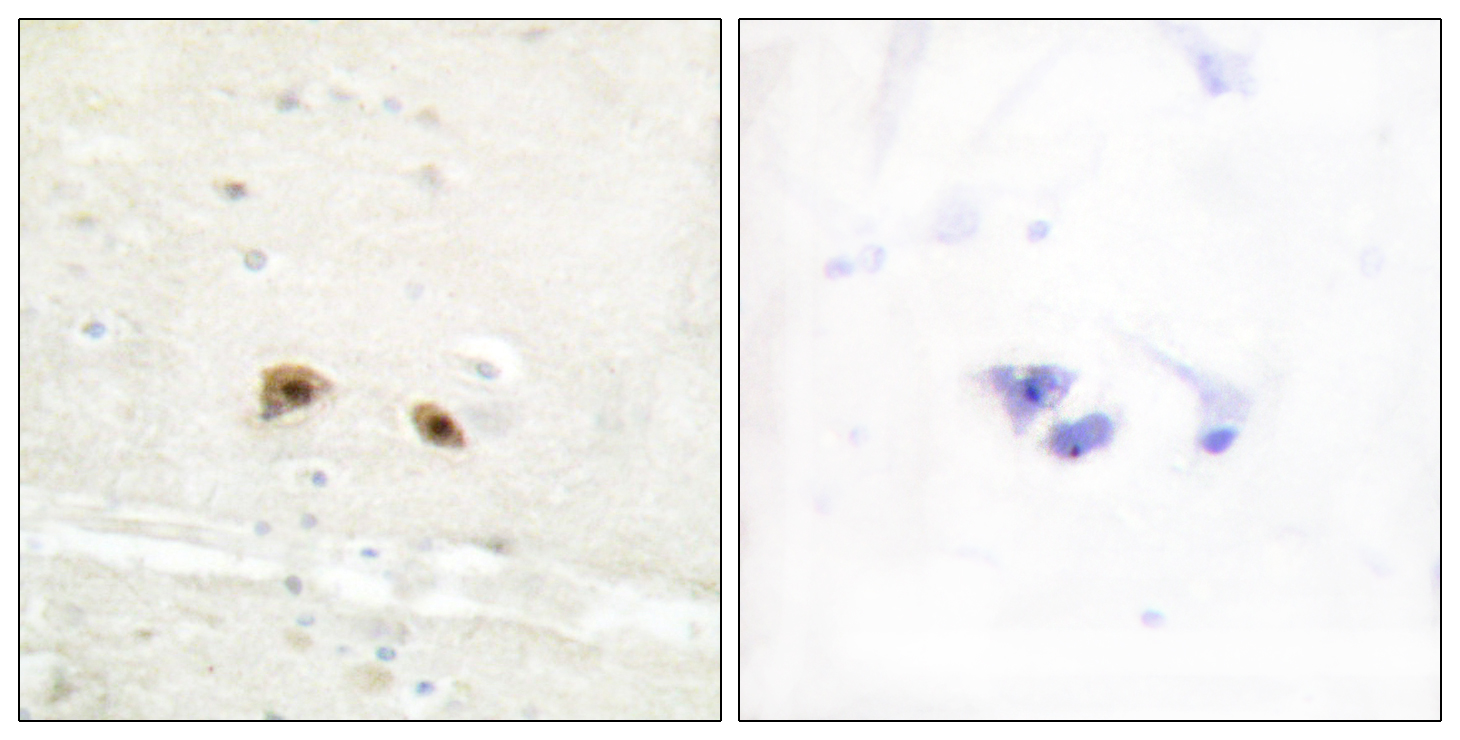Egr-3 Polyclonal Antibody
- Catalog No.:YT1499
- Applications:IHC;IF;ELISA
- Reactivity:Human;Mouse;Rat
- Target:
- Egr-3
- Fields:
- >>C-type lectin receptor signaling pathway;>>Hepatitis B;>>Viral carcinogenesis
- Gene Name:
- EGR3
- Protein Name:
- Early growth response protein 3
- Human Gene Id:
- 1960
- Human Swiss Prot No:
- Q06889
- Mouse Gene Id:
- 13655
- Mouse Swiss Prot No:
- P43300
- Rat Gene Id:
- 25148
- Rat Swiss Prot No:
- P43301
- Immunogen:
- The antiserum was produced against synthesized peptide derived from human EGR3. AA range:338-387
- Specificity:
- Egr-3 Polyclonal Antibody detects endogenous levels of Egr-3 protein.
- Formulation:
- Liquid in PBS containing 50% glycerol, 0.5% BSA and 0.02% sodium azide.
- Source:
- Polyclonal, Rabbit,IgG
- Dilution:
- IHC 1:100 - 1:300. ELISA: 1:10000.. IF 1:50-200
- Purification:
- The antibody was affinity-purified from rabbit antiserum by affinity-chromatography using epitope-specific immunogen.
- Concentration:
- 1 mg/ml
- Storage Stability:
- -15°C to -25°C/1 year(Do not lower than -25°C)
- Other Name:
- EGR3;PILOT;Early growth response protein 3;EGR-3;Zinc finger protein pilot
- Molecular Weight(Da):
- 43kD
- Background:
- This gene encodes a transcriptional regulator that belongs to the EGR family of C2H2-type zinc-finger proteins. It is an immediate-early growth response gene which is induced by mitogenic stimulation. The protein encoded by this gene participates in the transcriptional regulation of genes in controling biological rhythm. It may also play a role in a wide variety of processes including muscle development, lymphocyte development, endothelial cell growth and migration, and neuronal development. Alternative splicing results in multiple transcript variants encoding distinct isoforms.[provided by RefSeq, Dec 2010],
- Function:
- developmental stage:In T-cells, expressed 20 minutes following activation.,function:Probable transcription factor involved in muscle spindle development.,similarity:Belongs to the EGR C2H2-type zinc-finger protein family.,similarity:Contains 3 C2H2-type zinc fingers.,
- Subcellular Location:
- Nucleus .
- Expression:
- Brain,Peripheral blood T-cell,
- June 19-2018
- WESTERN IMMUNOBLOTTING PROTOCOL
- June 19-2018
- IMMUNOHISTOCHEMISTRY-PARAFFIN PROTOCOL
- June 19-2018
- IMMUNOFLUORESCENCE PROTOCOL
- September 08-2020
- FLOW-CYTOMEYRT-PROTOCOL
- May 20-2022
- Cell-Based ELISA│解您多样本WB检测之困扰
- July 13-2018
- CELL-BASED-ELISA-PROTOCOL-FOR-ACETYL-PROTEIN
- July 13-2018
- CELL-BASED-ELISA-PROTOCOL-FOR-PHOSPHO-PROTEIN
- July 13-2018
- Antibody-FAQs
- Products Images

- Immunohistochemistry analysis of paraffin-embedded human brain tissue, using EGR3 Antibody. The picture on the right is blocked with the synthesized peptide.



